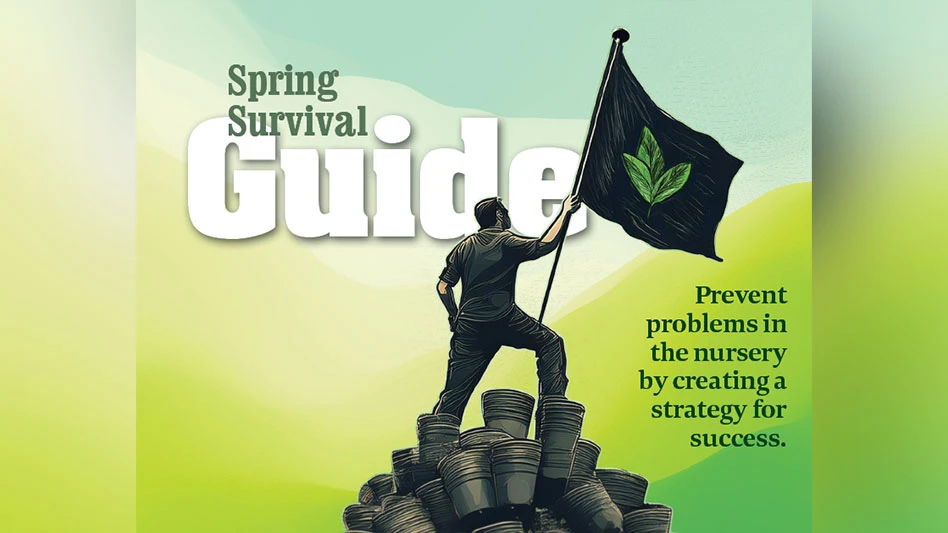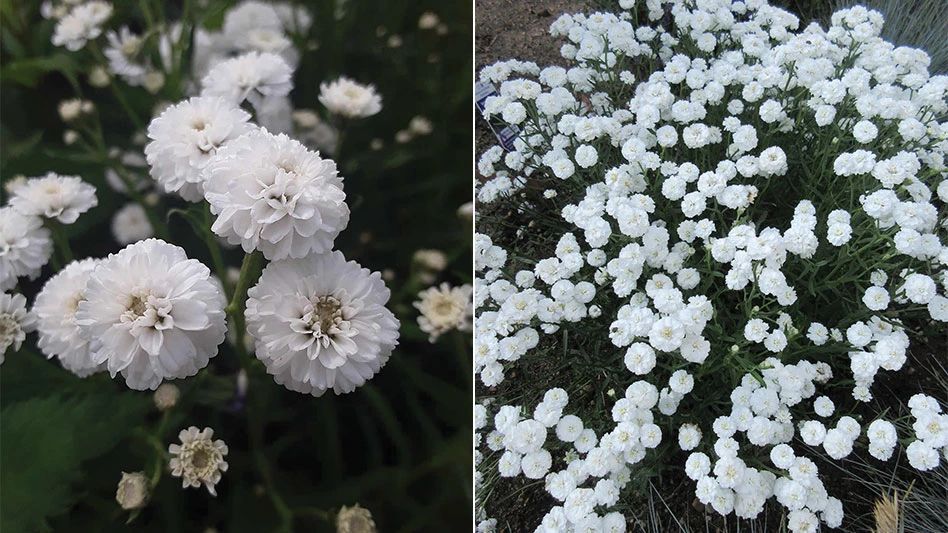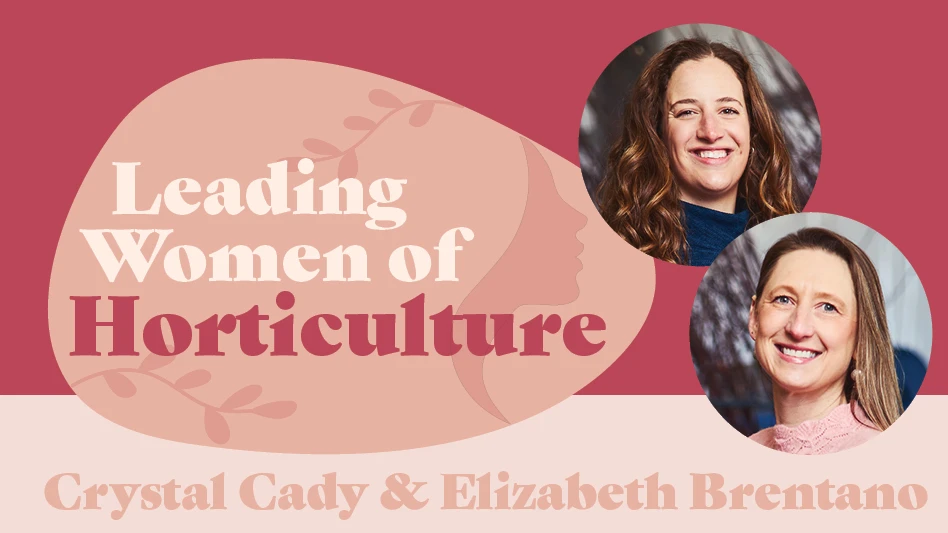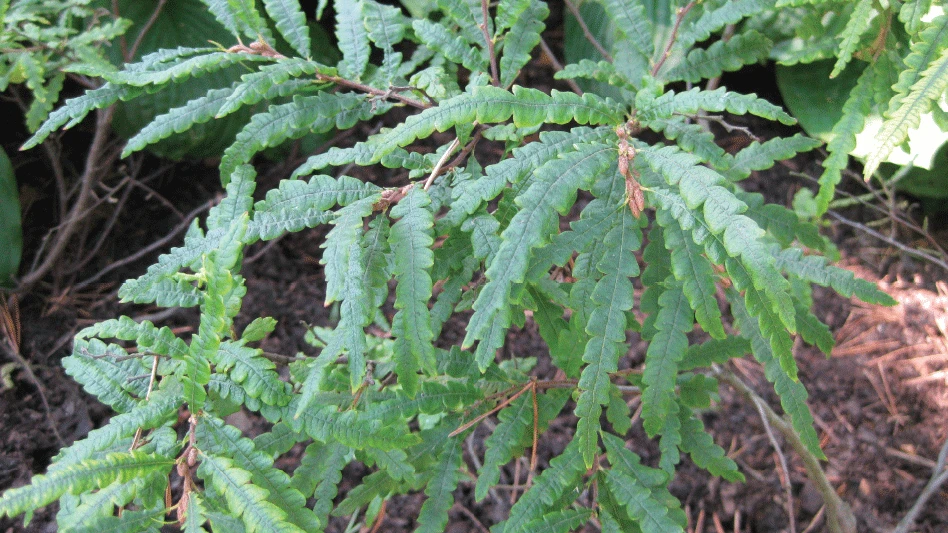 This fall color photo was taken Nov. 13, 2009, and the foliage was unfettered by the stresses of an Athens summer. This fall color photo was taken Nov. 13, 2009, and the foliage was unfettered by the stresses of an Athens summer. |
Viburnum Plicatum forma plicatum ‘Popcorn’
Who says floral impulse does not lead to a love affair . . . with a shrub? I can't answer that, but I first witnessed Viburnum plicatum forma plicatum 'Popcorn' at Hillier Garden Centres in England in 1999.
Small, 2-liter plants overburdened with 3½-inch white snowballs coerced a purchase. I brought rooted cuttings back to Athens, Ga., in the summer of that year and outplanted one to the collections at the Horticulture Farm. 'Shoshoni,' 'Shasta,' 'Sawtooth,' 'Triumph' and Newport were also included. Only 'Popcorn' remained in 2010, showing superior heat and drought tolerance and flowering reliably each year.
From the U.S. to the U.K.
 Flowers emerge light green, turning quickly snow white, averaging 3-3½ inches across in snowball-fashioned cymes. Flowers emerge light green, turning quickly snow white, averaging 3-3½ inches across in snowball-fashioned cymes. |
So where did 'Popcorn' originate? On numerous occasions, plants developed in the United States travel to Europe, attaining pedigreed status with subsequent ballyhooed reintroduction to American gardeners. Such was the case with 'Popcorn.' I traced the origin to the late David G. Leach who bred and introduced many superior rhododendrons, azaleas, magnolias and flowering shrubs. (His legacy continues at the 30-acre David G. Leach Research Station, a satellite of the Holden Arboretum in Madison, Ohio.)
I contacted Stephen Krebs, director of the station, for the specifics which he graciously provided. 'Popcorn' was a chance seedling that resulted from seed given to Leach by Henry Gleason of Madison, Ohio, in 1982. 'Popcorn' was introduced into commerce in 1994 through Herman Losely & Son Nursery in Perry, Ohio. The original 'Popcorn' was 18 feet high and 21 feet wide after 24 years. Krebs describes 'Popcorn' as having real flower power, "for after peak bloom, a heavy rain knocked most of the flowers off and we were standing ankle deep in petals." He also noted that it is not fully sterile and fruit set is sparse. Based on my experience with so-termed sterile-flowered plants, the seeds that develop often result in sterile or double, and showier-flowered seedlings.
I should mention that forma plicatum as well as forma tomentosum are resistant to the viburnum beetle, according to Paul Weston, an entomologist at Cornell University. I witnessed Viburnum trilobum and V. plicatum f. tomentosum side-by-side in a Freeport, Maine, garden in August 2009. The former was almost totally defoliated (except for veins), thanks to the viburnum beetle, and the latter was unaffected. |
 Overwhelming flowers
Overwhelming flowers
Precocious, prodigious and reliably consistent flower production elevated 'Popcorn' to first order flowering shrub status. Outplanted in November 2000 as a wee 3-gallon shrub, it was 9-10 feet high and wide in 2009. In youth, its branches are strongly ascending, becoming more spreading with maturity. Leaves emerge vibrant green in late March in Athens, with flowers in full splendor in early- to mid-April. Leaves mature dark green, display superior heat and drought tolerance, becoming bronze-red-purple-maroon in November. The foliage was unfettered by the stresses of an Athens summer.
The flowers emerge light green, turning quickly snow white, averaging 3- 3½ inches across in snowball-fashioned cymes. 'Popcorn' is the first to flower of the V. plicatum f. plicatum and f. tomentosum types previously listed. I have been overwhelmed with the quantity of flowers. Its flowering date coincides with garden center traffic, which should result in improved sales.
In 2010, 'Popcorn' was added to the new Dirr garden along with 27 other viburnums, and I anticipate the great floral display. My neighbor mentioned how nice the new border looked. "What did you plant?" he asked. I said, "primarily viburnums." He asked, "What's a viburnum?" Keep educating your customers, for the journey will be forever.
It's safe to say that many wonderful plants never experience the light of a garden day because they are not marketed to any degree. It's equally amazing that I discovered 'Popcorn' in 1999 in England, five years after it had been introduced in the United States.
Michael A. Dirr is a retired professor of horticulture at the University of Georgia; and partner in Plant Introductions Inc., www.plantintroductions.com.
Get curated news on YOUR industry.
Enter your email to receive our newsletters.
Explore the September 2011 Issue
Check out more from this issue and find your next story to read.
Latest from Nursery Management
- Dümmen Orange North America celebrating 25th anniversary in 2025
- Redesigning women
- Illinois Landscape Contractors Association changes name to Landscape Illinois
- 2025 Proven Winners Horticulture Scholarship applications now open
- ICL’s Gemini Granular herbicide now registered for use in California
- Eurazeo Planetary Boundaries Fund acquires Bioline AgroSciences
- The Leading Women of Horticulture
- Leading Women of Horticulture: Dana Massey, Plantworks Nursery






